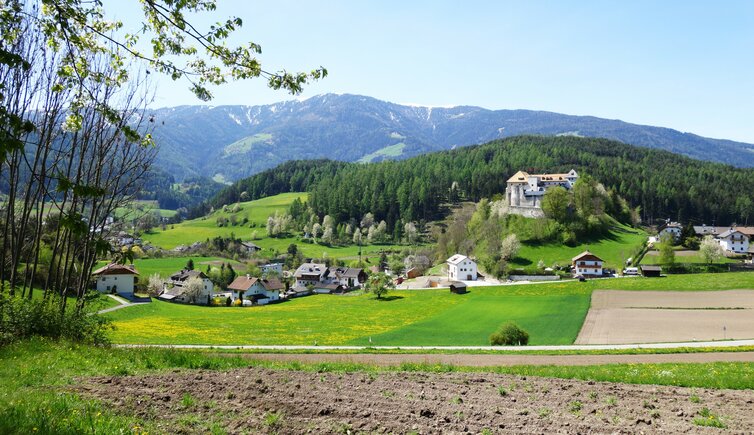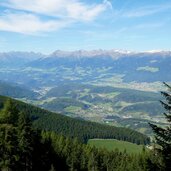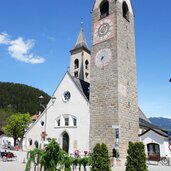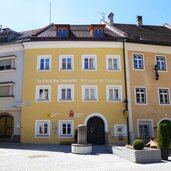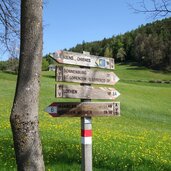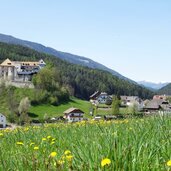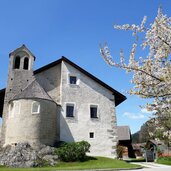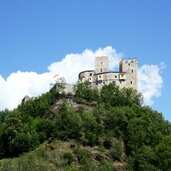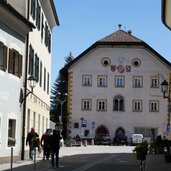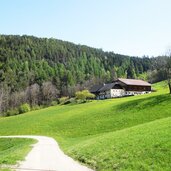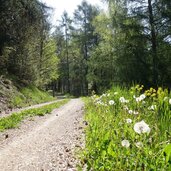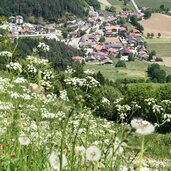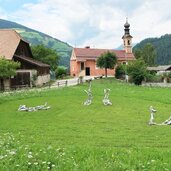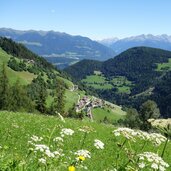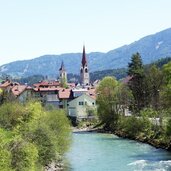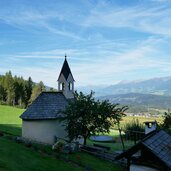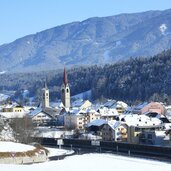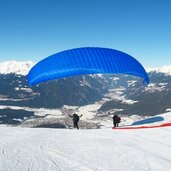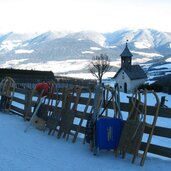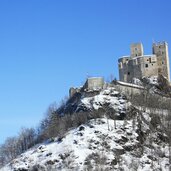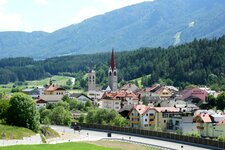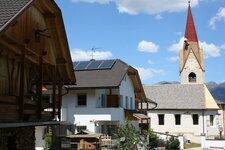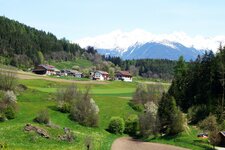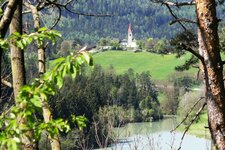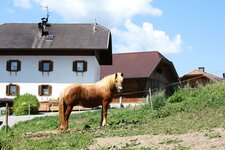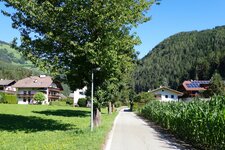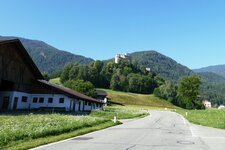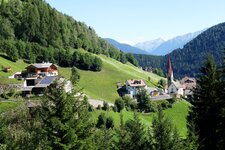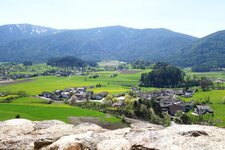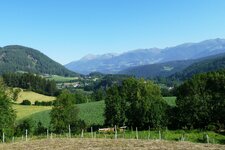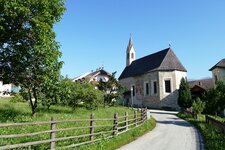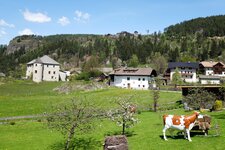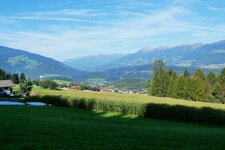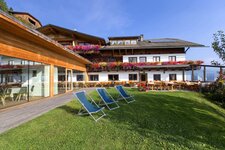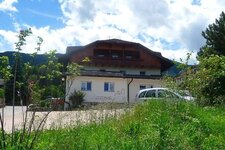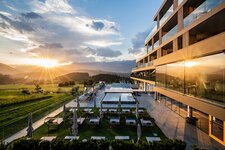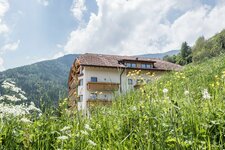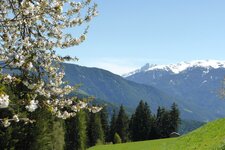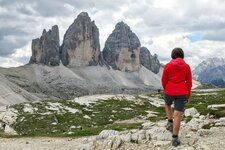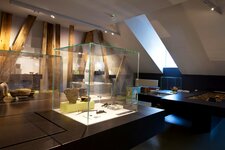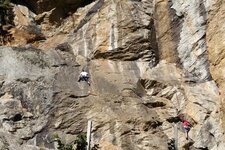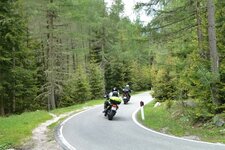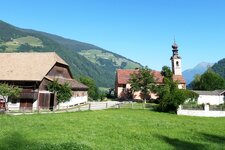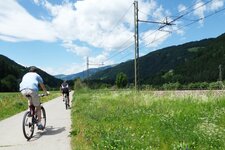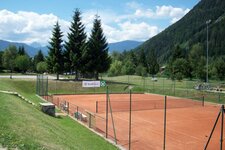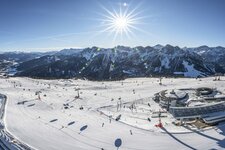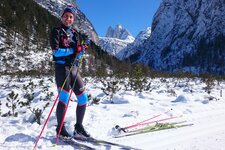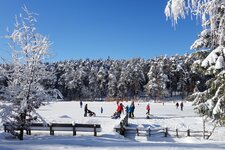The Archaeological Panorama Trail and trips to San Michele Castle and Castelbadia show you the finest aspects of ”Lorenzn”
Image gallery: San Lorenzo di Sebato
The most frequent visitor in San Lorenzo is the sun. The wide valley basin where the municipality is located extends to the sunny slopes at the entrance to the Val Badia, into the forests below the Val Pusteria Sun Road, and to the villages around Brunico. The market town is also defined by the name Sebatum. This was the name of the Roman road station, which is commemorated today by the Mansio Sebatum Museum.
Together with the adjoining Archaeological Panorama Trail, it is the only museum in South Tyrol dedicated to the Roman era. Let's start in the main village: At the confluence of the Rienza River and the Rio Gadera, the cobbled village square and the Church of Saint Lawrence with its non-identical towers form the centre. Above the village, you can see Mt. Plan de Corones.
It is a hiking area with museums in summer and South Tyrol's largest skiing area in winter. A bus takes you to the valley station in Riscone. The journey continues to the entrance of the Val Badia, where you will find hamlets such as Floronzo, San Martino in Badia, Palù di San Lorenzo, Mantana, Elle, and - furthest away - Onies. Between them is the settlement of Santa Maria di Sares with the pilgrimage church of Our Lady of Loreto.
Historic buildings such as San Michele Castle, the Hebenstreit Residence and Castelbadia with its convent tell of past centuries, proud lords and cultural masterpieces. The trails through the wildflower meadows and fields in the valley basin connect the villages and are also suitable for cycle tours. The hamlet of Castelbadia, pictured here, extends below the Val Pusteria Sun Road.
The same applies to Campolino and Fassine. Other hamlets, such as Santo Stefano, are located directly on the slopes of Mt. Plan de Corones. Winter hikes and one of the toboggan runs in the Val Pusteria - the Haidenberg toboggan run - start from there. If you want to enjoy the tranquillity of winter while cross-country skiing, you can try the trail at the sports park in Riscone.
Notice: Due to the construction of the Riggertal loop and safety-related works, sections of the Val Pusteria Railway will be closed until January 2026. A rail replacement bus service will be in operation.
The… read more
